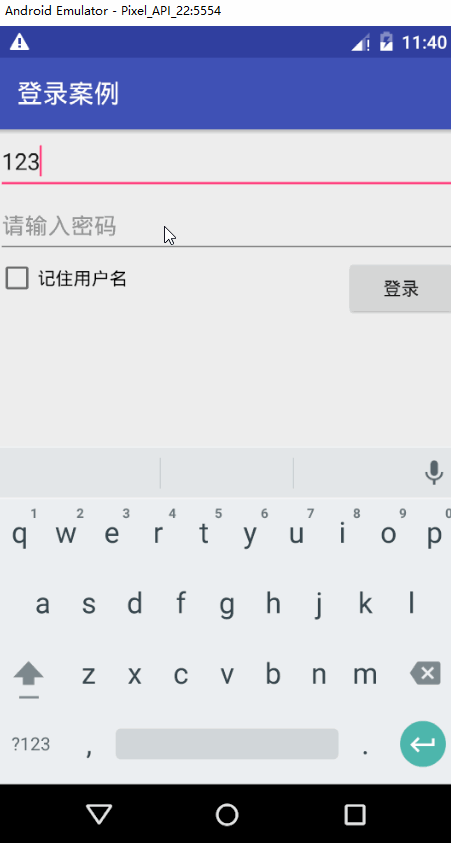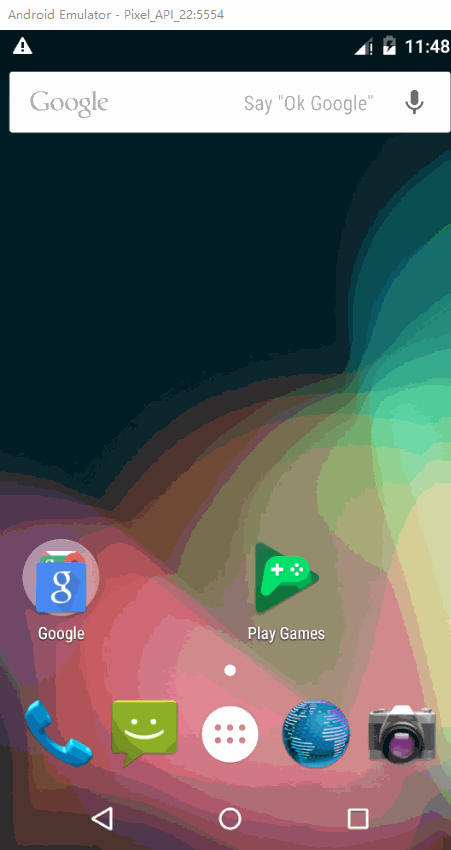一、效果展示
1、最初可以看到data/data目录下该项目只有一个cache文件夹和lib文件

第一次运行程序,用户名和密码皆为空。

当我们输入用户名和密码后,点击登录项目目录下出现名为info.txt的文档,打开它可以看到原先输入的用户名和密码。



第二次运行,可以看到用户名和密码输入框内都已经有内容了

二、设计知识点
java 的IO流
checkbox单选框
三、实现步骤
1、编写布局文件,这里就不详细解释了,很简单的。代码如下:
<?xml version="1.0" encoding="utf-8"?>
<LinearLayout
xmlns:android="http://schemas.android.com/apk/res/android"
xmlns:tools="http://schemas.android.com/tools"
xmlns:app="http://schemas.android.com/apk/res-auto"
android:layout_width="match_parent"
android:layout_height="match_parent"
android:orientation="vertical"
tools:context=".MainActivity">
<EditText
android:id="@+id/tv_username"
android:layout_width="match_parent"
android:layout_height="50dp"
android:hint="请输入用户名"
/>
<EditText
android:id="@+id/tv_pwd"
android:layout_width="match_parent"
android:layout_height="50dp"
android:inputType="textPassword"
android:hint="请输入密码"
/>
<RelativeLayout
android:layout_width="match_parent"
android:layout_height="wrap_content"
>
<CheckBox
android:id="@+id/cb_remember"
android:layout_width="wrap_content"
android:layout_height="wrap_content"
android:layout_alignParentLeft="true"
android:text="记住用户名"/>
<Button
android:id="@+id/btn_login"
android:onClick="login"
android:layout_alignParentRight="true"
android:layout_width="wrap_content"
android:layout_height="wrap_content"
android:text="登录"/>
</RelativeLayout>
</LinearLayout>
2、定义一个UserInfoUtils类,通过IO流实现保存数据的方法和读取数据的方法。

代码如下:
package com.example.a15114.itcast_logindemo;
import java.io.*;
import java.util.HashMap;
import java.util.Map;
public class UserInfoUtils {
//保存用户名和密码的业务方法
public static boolean saveInfo(String username,String pwd){
try {
//[1]创建file类指定我们要把数据存储位置
String result=username+"##"+pwd;
//[2]创建一个文件输出
File file=new File("/data/data/com.example.a15114.itcast_logindemo/info.txt");
FileOutputStream fos=new FileOutputStream(file);
fos.write(result.getBytes());
fos.close();
return true;
} catch (Exception e) {
e.printStackTrace();
return false;
}
}
//读取用户的信息
public static Map<String,String> readInfo() {
//[1]定义map
try {
Map<String,String> maps=new HashMap<String, String>();
File file=new File("/data/data/com.example.a15114.itcast_logindemo/info.txt");
FileInputStream fis= null;
fis = new FileInputStream(file);
BufferedReader bufr=new BufferedReader(new InputStreamReader(fis));
String content=bufr.readLine();//读取数据
//切割字符串 封装到map集合中
String[]splis=content.split("##");
String name=splis[0];
String pwd=splis[1];
//把name和pwd放入map中
maps.put("name",name);
maps.put("pwd",pwd);
fis.close();
return maps;
} catch (Exception e) {
e.printStackTrace();
return null;
}
}
}
3、编写安卓程序主java类,
代码如下:
package com.example.a15114.itcast_logindemo;
import android.support.v7.app.AppCompatActivity;
import android.os.Bundle;
import android.text.TextUtils;
import android.view.View;
import android.widget.CheckBox;
import android.widget.EditText;
import android.widget.Toast;
import java.util.Map;
public class MainActivity extends AppCompatActivity {
EditText et_username;
EditText et_userpassword;
CheckBox cb_ischeck;
@Override
protected void onCreate(Bundle savedInstanceState) {
super.onCreate(savedInstanceState);
setContentView(R.layout.activity_main);
//[1]找到我们关心的控件
et_username=findViewById(R.id.tv_username);
et_userpassword=findViewById(R.id.tv_pwd);
cb_ischeck=findViewById(R.id.cb_remember);
//[1.1]读取data/data 下 info.txt信息
Map<String,String> maps=UserInfoUtils.readInfo();
if (maps!=null){
//把name和pwd取出来
String name=maps.get("name");
String pwd=maps.get("pwd");
//[1.2]把name和pwd显示到edittext上
et_username.setText(name);
et_userpassword.setText(pwd);
}
}
//[2]写按钮的点击事件
public void login(View v){
//[2.1]获取用户名和密码
String name=et_username.getText().toString().trim();
String pwd=et_userpassword.getText().toString().trim();
//[2.2]判断name和pwd是否为空
if (TextUtils.isEmpty(name)||TextUtils.isEmpty(pwd)){
Toast.makeText(MainActivity.this,"用户名或密码不能为空",Toast.LENGTH_SHORT).show();
}else {
//[2.3]进行登录的逻辑
System.out.println("连接服务器进行登录 网络编程之后实现");
if (cb_ischeck.isChecked()){
//[2.4]把已经输入的用户名和密码给存起来
boolean result=UserInfoUtils.saveInfo(name,pwd);
if (result){
Toast.makeText(MainActivity.this,"保存成功",Toast.LENGTH_SHORT).show();
}else {
Toast.makeText(MainActivity.this,"保存失败",Toast.LENGTH_SHORT).show();
}
}else {
Toast.makeText(MainActivity.this,"请勾选cb",Toast.LENGTH_SHORT).show();
}
}
}
}
本内容重点掌握java的IO流,难点用户名和密码对应(使用map集合),若有疑问可留言。